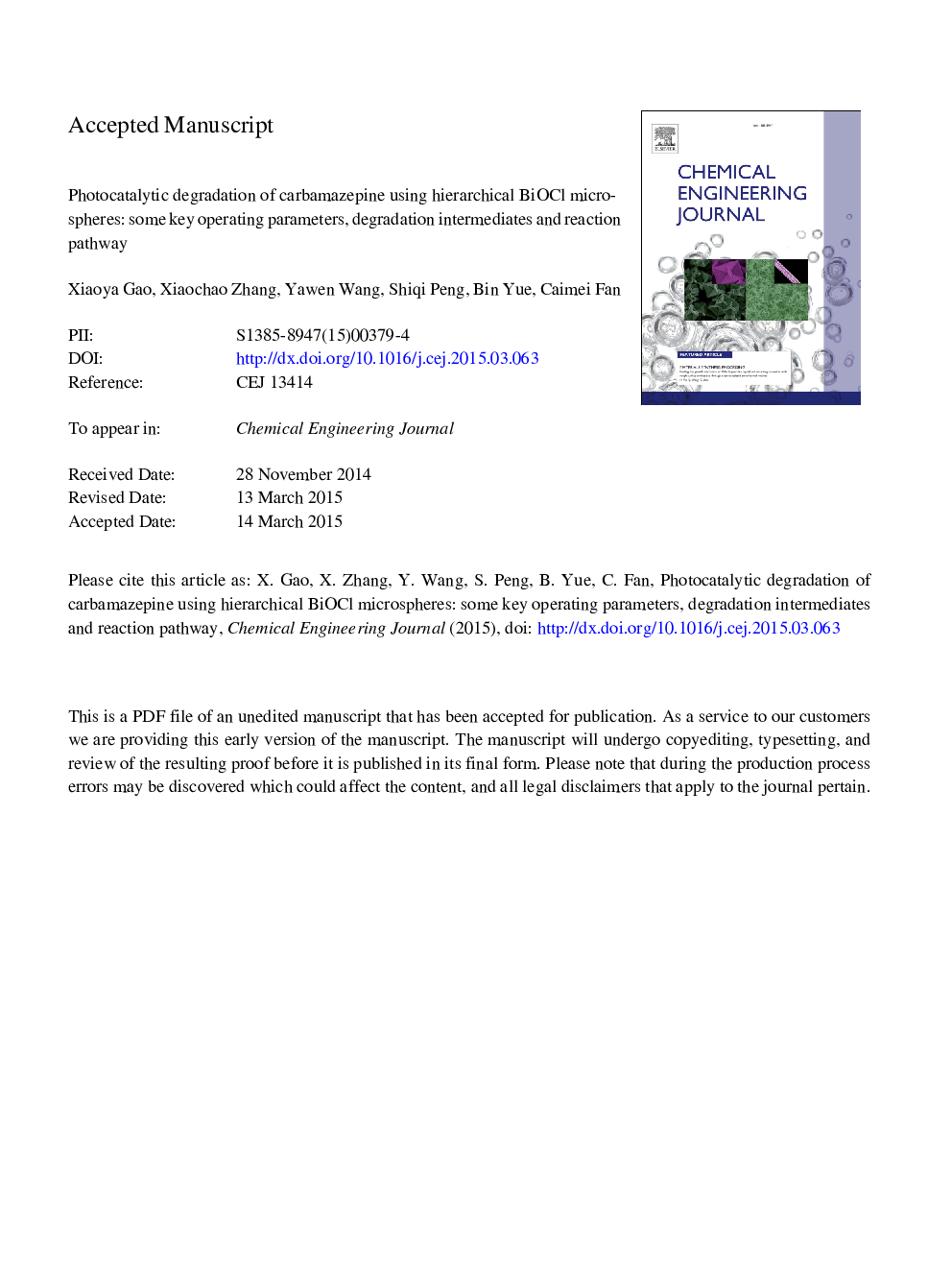| Article ID | Journal | Published Year | Pages | File Type |
|---|---|---|---|---|
| 6584739 | Chemical Engineering Journal | 2015 | 37 Pages |
Abstract
This study systematically investigated the photocatalytic degradation of carbamazepine (CBZ) by hierarchical BiOCl microspheres to identify the factors affecting the kinetics of the process and to elucidate its degradation pathway. The effects of some key parameters including initial BiOCl dosage, CBZ concentrations, solution pH, coexisting inorganic anions (Clâ, NO3â, and HCO3â) and cations (Mg2+, Ca2+, and Al3+) on photodegradation efficiency were examined. It was found that CBZ degradation followed the pseudo-first-order kinetics model with fast kinetics. The optimal concentration of BiOCl was determined to be 0.8 g Lâ1 with a rate constant (k) of 0.0408, which increased with the decrease in the initial concentration of CBZ. Changing solution pH influenced the CBZ degradation significantly and the best performance was achieved at pH 4. The presence of anions had minor effects on the CBZ degradation. In contrast, coexisting cations clearly slowed down the degradation efficiency, and the inhibiting effect was following the order of Al3+ > Ca2+ â Mg2+. Nine reaction intermediates were assigned by HPLC-ESI-Q-TOF-MSn, and a tentative degradation pathway was proposed. With longer experimental durations, most reaction intermediate products would disappear without the residue of toxic intermediates. Our results show that BiOCl photocatalytic process is a promising technique for removal of CBZ pharmaceuticals from water.
Related Topics
Physical Sciences and Engineering
Chemical Engineering
Chemical Engineering (General)
Authors
Xiaoya Gao, Xiaochao Zhang, Yawen Wang, Shiqi Peng, Bin Yue, Caimei Fan,
